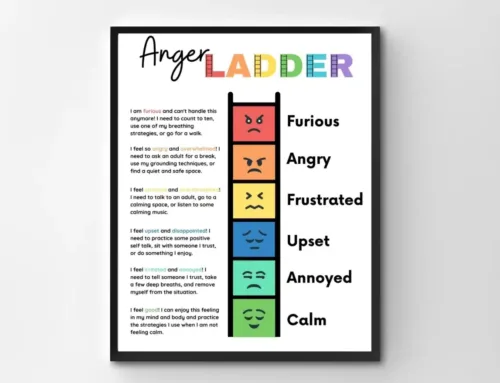Anger is a healthy emotion, not a flaw. The goal of anger management is to manage anger so angry feelings are expressed in a respectful, assertive and healthy way. When you feel angry, your emotional state and body can shift fast: a pounding heart, tight jaw, and rising tension are classic physical warning signs. Left unchecked, repeated spikes can raise high blood pressure, strain relationships, and worsen mental health problems or substance abuse risk.
These 10 anger management tips give practical anger management strategies you can use in daily life to stay calm, control anger, and reduce the negative impact of frustrating situations like a traffic jam or a tough daily commute.
1) How do I calm anger in two minutes?
Breathe slow, name the emotion, and lower your voice to drop arousal fast.
Use deep breathing in a four by four rhythm for two minutes: inhale 4 seconds, hold 4, exhale 4, hold 4. Say, “This is anger about X,” to switch the brain from threat to label.
Speak slower and softer to signal safety. If anger starts from mild irritation, this quick reset helps you feel calmer in the moment. Simple relaxation techniques are in Meditation and Mindfulness Strategies.
2) How do I pause before I react?
Take a short time out and reset posture so you respond, not react.
Step away for two to five minutes and look down briefly to break eye lock. Use the cue line, “Pause, breathe, choose,” before talking. Return with one clear point. This small practice protects health, focus, and connection when circumstances are heated. Foundations live in Anger Management.
3) How do I reframe hot thoughts fast?
Challenge absolutes and test assumptions to cool thinking.
Spot “always”, “never”, “must”, and “should” in self talk. Swap mind reading for a check: “I will ask for clarity.” Keep three replacements ready for your common triggers to prevent negative thoughts from driving aggressive behaviour. Learn how in What Is Cognitive Behavioural Therapy (CBT).
4) How do I speak without escalation?
Use an I statement, one topic, and reflective listening to keep respect high.
Structure: behaviour, impact, request in one sentence. Mirror with “What I hear is…” and agree on next steps. Cap hard talks at twenty minutes. This keeps expressing anger socially acceptable and protective of a healthy relationship. See scripts in Resolve Conflict with Better Communication.
5) How do I set a boundary that holds?
State the limit, the reason, and the next step so the line is clear.
Say what you will do, not what they must do. Tie the boundary to safety or respect. Follow through once. Boundaries help a person stay calm and assertive even when frustration is high.
6) How do I lower anger with daily habits?
Sleep well, move often, and plan micro resets that build resilience.
Sleep 7 to 9 hours, cut caffeine after midday, and reduce alcohol. Aim for 150 minutes weekly moderate exercise or 75 minutes vigorous. Schedule two one minute breath breaks at 10 am and 3 pm. These habits reduce stress, lengthen the fuse, and help in the long run. Practical load tools are in Stress Management Techniques.
7) How do I spot triggers early?
Track time, place, intensity, and outcome for one week to see patterns.
Identify triggers by logging people, places, and topics that spike anger. Rate intensity 1 to 10 and note what helped. Pre-plan coping steps for your top two triggers. This understanding anger step shows how events affect your reactions at work, with a child, or at home.
8) How do I use movement to discharge arousal?
Take a brisk walk or a short strength set to bleed off adrenaline.
Walk fast for ten minutes, climb stairs for five, or do a quick bodyweight set. Pair movement with slow exhale. When you want to throw things, move your body instead. Even two minutes can flip your emotional state from hot to steady.
9) How do I repair after an outburst?
Own the action, validate the impact, and state a plan you will follow.
Use an I statement, apologise for the behaviour, and name the harm if anyone is hurting or upset. Say what you will do next time and write it down. Repair restores connection and trust after a spike in temper.
10) When should I seek professional help?
Act if anger is frequent, harmful, or hard to stop, and get structured support.
Red flags: weekly blow ups, threats or damage, fear at home or work, or difficulty calming after half an hour. Start with six to ten CBT-focused sessions and measure progress; add couples sessions if conflict cycles repeat. Compare options via Counselling Services. Professional help can also screen for mental health conditions and guide care if anger problems are linked with substance abuse or other concerns.
Common misconceptions to drop today
It is a common misconception that the best way to express anger is to “let it rip.” Venting with sarcasm or attacks makes things worse. Avoid sarcasm, name one issue, and use an assertive request. Another myth says strong people never show feeling. In reality, naming feelings is a positive skill and the first step to better outcomes.
Try these quick relaxation techniques
Alongside breath, progressive muscle relaxation can lower arousal: tense each muscle group for five seconds, then release for ten, moving from head to toe. Add quiet time without screens and practise three slow belly breaths before you speak. These common strategies help you breathe deeply, settle emotions, and focus.
Conclusion
Anger becomes a problem when it runs the show, not when it shows you what matters. Use breath to cool the body, pause to create space, and reframe hot thoughts before you speak. Set clear requests, hold firm boundaries, and choose movement over outbursts. Track warning signs, identify triggers, and build small habits that protect your health and relationships. If anger issues are frequent or hard to stop, or if the pattern has a negative impact on work or home, add structured care. With steady practice and the right support, you can control your anger, keep angry feelings expressed appropriately, and lead your life with more calm, respect, and connection.
Related Posts
Fees And Rebates
We offer cost-effective solutions that can fit within your budget. The insights and skills acquired in therapy can continue to positively impact mental and emotional health long after the therapy sessions have ended, making it a truly worthwhile investment in yourself.















